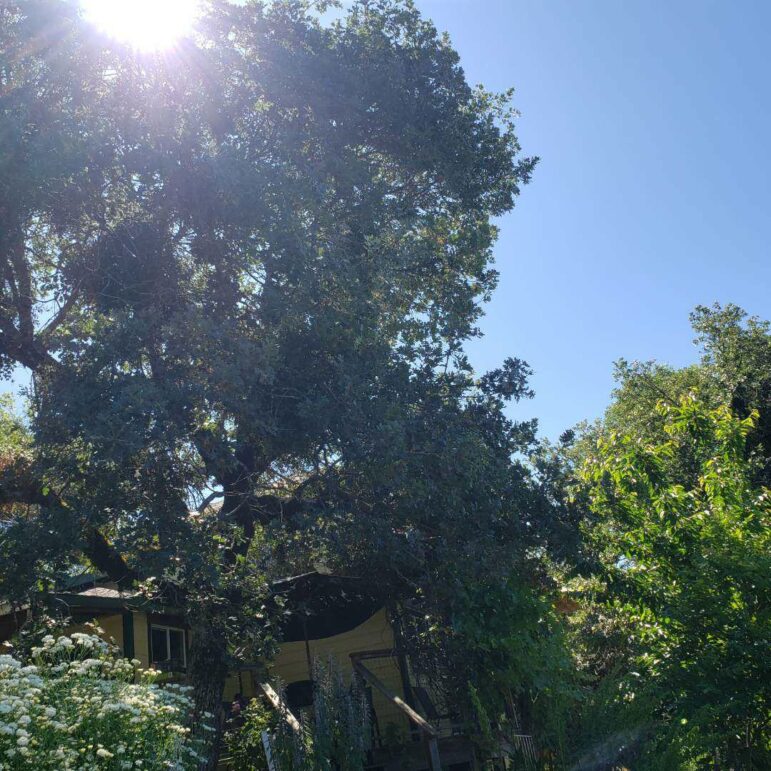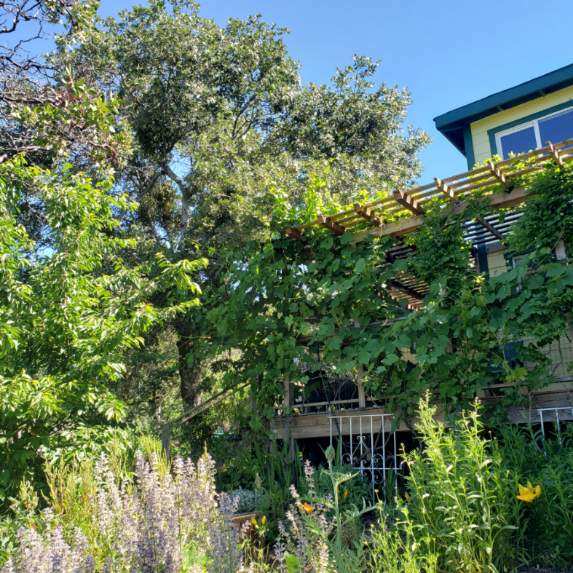This is our farm column from farmer Casey O’Neill. O’Neill is the owner operator of HappyDay Farms north of Laytonville, and a long time advocate for the cannabis community in Mendocino Co; more of his writing can be found here. The opinions expressed in this column are those of the writer. If you would like to submit a letter to the editor feel free to write to [email protected].
I’ve been thinking about the words that we use in relation to land and animals; tend, shepard, steward, husband. To live in ministry to something bigger than oneself, to serve the principles of growth in the joy of green abundance, of vibrant landscape, of happy animals. The wheel of the seasons turns as I stride through the days with a sense of purpose that drives me, sometimes to excess.
These long spring days are amazing, an exercise in the revelry of shared effort to bring crops to market and raise up the livestock that sustain our family and provide their manure to the landscape to bring about more and better forage in the seasons to come. I don’t know that I remember a spring so lush, so green.
This is the year I really take note of the perennials, and come to understand their capacity and worth in a new light. The fruit trees, bushes, roses, peonies and other plant species have made use of the heavy rains and snow this winter to explode in growth that takes my breath away. When I plant, I have a vision for what the end result will be, but this spring has exceeded my hopes and left me feeling a deep comfort of “it’s working!”
As the landscape begins to dry out, we spend a good portion of our time working with water, directing it through the irrigation lines and timers to arrive in the soil and nourish the plants. Tending to water is a complex ministry that can confound and befuddle, and that I often take for granted when it’s working well, so that it seems like I only focus on it when it’s a problem. I’ve been reminding myself to be grateful for water, for the systems that bring it to where I want it to be, for water is life.
In the seventeen years since I first built my cabin, in a clearing just off the driveway, a couple hundred yards from the house where I was born and raised, the land around me has changed so much. Part of this is my doing, our doing, as we work in concert as a family, but part of it is the natural change of the landscape as trees grow and some die and break in the storms of winter. A lifetime lived on this land begins to give me a sense of how much things change, yet how they stay the same. Water flows, drips, seeps, and then, in summer, ebbs away. We build ponds to hold the abundant winter rains, and use this water to farm, to tend the landscape.
There is an oak just outside my house that has become like an old friend. When I first built the cabin it was a small, stunted tree growing in rocky ground right up against a driveway. I moved the driveway further away from the house and built a compost pile near it to feed the garden I had begun. Over the years the tree received water and fertility as we tended the space; at its base now grow rosebush, daphne, rosemary and a bed of tulips.

As the years melt away, the oak grows, spreading its branches across the space that is the heart of our garden, closest to our front door. The beds that Amber uses to grow flowers for bouquets are closest, along with the roses, mulberry bush, cherry tree and the grape arbor that now shades the porch in summer. Each year the oak provides a little more afternoon shade to the house, and I can see that in ten years time or so it will shade the house completely during the summer, offering a welcome respite from the heat of the sun. Even now it shades the porch, working in concert with the grape arbor to create a cool oasis that we relish. The wisteria creeps up the arbor, sending the scent of early spring flowers into our nostrils and striking our eyes with their beauty.
The old saying goes that the best time to plant an orchard is ten years ago, and while this adage rings true, there is also no time like the present. Though our cropping system is based on rapid-rotation intensive plantings that cycle through the seasons, I pay more and more attention to the perennials with each passing year. We work hard to manage the short cycles of salad mixes and root crops, the slightly longer passages of cannabis, tomatoes, peppers, cukes and squash, yet the perennials persist through it all.
Each year I try to plant more things that need less tending, and when I find a sunny winter day I haul the compost that the rabbits make with their manure, straw bedding, and green matter from the gardens, to fertilize the dormant plants so that they will awaken strong and vibrant in the spring. I love seeing the growth each year, and it drives me to support it in a cycle of affirmation and love. As always, much love and great success to you on your journey!


